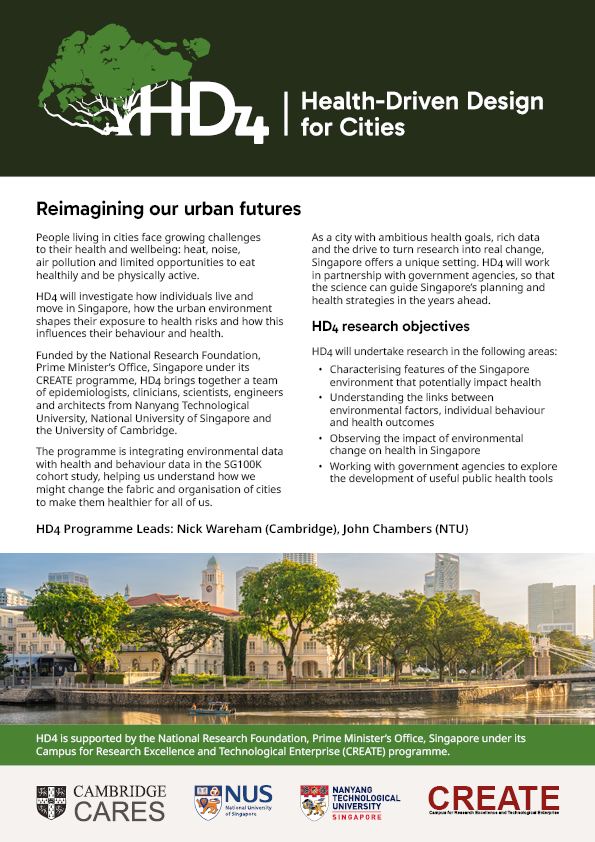WP1: Urban environmental exposures for SG100K participants
What type of city designs do we see around us in Singapore?
The places where we live and work influence our health over time. To understand these potential impacts, HD4 is gathering data on Singapore’s urban environment from government agencies and open-source platforms. This includes information such as weather indicators, features of the built environment, population density and other socio-demographic markers.
Data will be used to measure how urban factors including heat stress, air pollution and access to transport affect people in different areas. Researchers will group areas with similar characteristics and classify the types of environments in which people live.
Researchers will then link this information to the anonymised residential data of SG100K participants, to gain a greater understanding of individual exposures.
The data assembled by WP1 will support the discovery of links between environmental factors, behaviours and health outcomes in WP2 and WP3.
Research objectives:
- – Identify data sources to characterise environmental exposures
- – Generate location-based urban exposure measures of humid heat stress, air pollution, food retail accessibility, land use, amenities and infrastructure
- – Develop geospatial and data-driven models to define urban exposures
- – Link participants in SG100K to environmental exposures calculated using existing data and describe the variation in exposures by socio-demographic factors
This research is supported by the National Research Foundation, Prime Minister’s Office, Singapore under its Campus for Research Excellence and Technological Enterprise (CREATE) programme.
Leads

University of Cambridge, Department of Architecture

National University of Singapore, Department of Architecture

National University of Singapore, Department of Civil and Environmental Engineering


